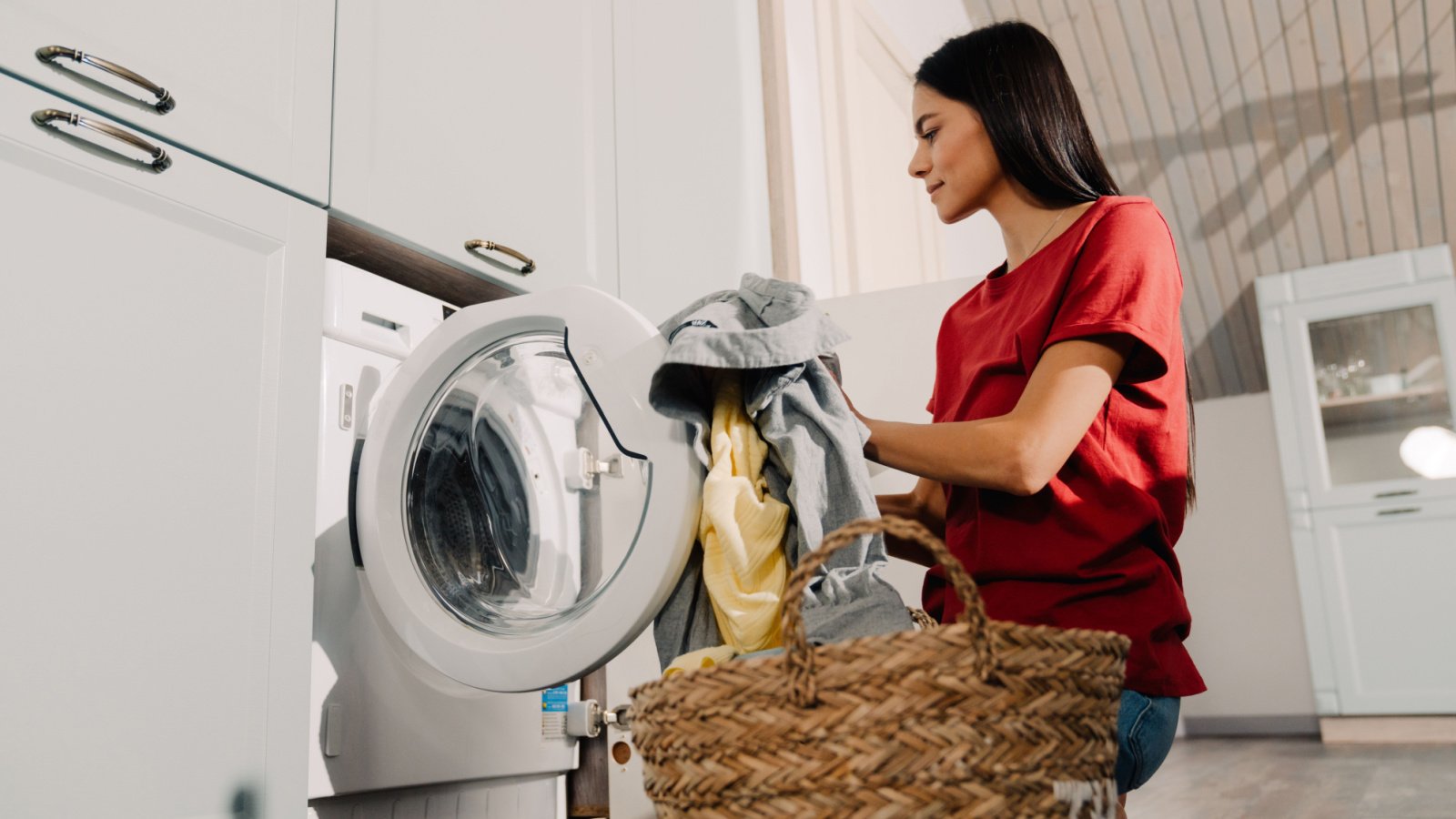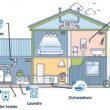In the modern home, countless devices promise convenience and luxury, yet often at the cost of increased electricity consumption. Understanding which appliances are the biggest energy culprits is essential for managing household expenses effectively, advises the East Bay Management experts.
Here we’ll look at common household devices that can significantly hike your electricity bill, shedding light on the hidden costs of everyday conveniences and reveal how these choices impact our energy footprint.
Tumble Dryers

Tumble dryers are high on the list of energy-consuming household appliances. They require a lot of power to heat up and maintain high temperatures for drying clothes. Opting for air drying when possible can significantly reduce your home’s energy usage.
Dehumidifiers

Dehumidifiers, while essential for reducing moisture in damp areas, consume a lot of energy. Running a dehumidifier continuously can lead to noticeable increases in your electric bill. It’s advisable to use them only when necessary and opt for energy-efficient models.
Plasma Televisions

Plasma TVs consume more electricity than LED or LCD models. They require more power to light the display across a large screen, leading to higher energy costs. Considering a more energy-efficient television technology could be a cost-effective move.
Halogen Lighting

Halogen bulbs, while brighter, consume more energy than LED bulbs. They generate a lot of heat and have a shorter lifespan, which also adds to their inefficiency. Replacing them with LED bulbs can significantly reduce your home’s electricity consumption.
Hot Tubs

Hot tubs require a large amount of energy to heat water and maintain temperature. Their regular use, especially in cooler climates, can substantially increase your electricity bill. To minimize costs, consider limiting the use of hot tubs or using energy-saving settings.
Aquarium Heaters

Heating an aquarium continuously, especially large ones, requires a lot of energy. If you’re an aquarium enthusiast, consider energy-efficient heaters and monitor the temperature closely to avoid overuse.
Electric Grills

Electric grills, popular for indoor grilling, consume a considerable amount of electricity. They heat up quickly and maintain high temperatures, which is costly. For frequent grillers, alternatives like gas grills might be more economical.
Hair Dryers

Hair dryers are high-wattage devices that can draw a surprising amount of power, especially when used daily. To reduce their impact on your electricity bill, consider air-drying your hair or using lower settings.
Gaming Consoles

Gaming consoles, particularly when used for extended periods, can draw a significant amount of electricity. To minimize their impact, turn off consoles completely when not in use instead of leaving them in standby mode.
Clothes Irons

Clothes irons are another high-energy appliance. Ironing large batches of clothes at once instead of ironing frequently can help reduce energy use.
Dishwashers

Dishwashers can be energy-intensive, especially if used frequently and not fully loaded. Ensuring that the dishwasher is full before running and using energy-saving settings can help reduce energy consumption.
Vacuum Cleaners

Vacuum cleaners can draw a lot of power, especially models with high suction. Regular maintenance and efficient use can help minimize their energy consumption.
Coffee Makers

Coffee makers, especially those that keep coffee warm for long periods, can consume a surprising amount of electricity. Brewing only as much coffee as you’ll immediately consume can help mitigate this.
Bread Makers

Bread makers use a significant amount of electricity during the mixing and baking processes. Baking multiple loaves at once or using the appliance during off-peak hours can help manage costs.
Ice Makers

Built-in ice makers in freezers can increase the amount of energy your freezer uses. Turning them off when not needed can help save on your electricity bills.
Space Heaters

Space heaters are notorious for consuming a significant amount of electricity. While they provide quick warmth in small areas, they do so at a high energy cost, especially when used frequently or for prolonged periods. To avoid a spike in your electricity bill, limit their use to exceptionally cold days.
Air Conditioners

Air conditioning units are among the biggest contributors to high electricity bills during hot weather. They use a substantial amount of power to cool an entire home or large spaces. Consider using programmable thermostats or energy-efficient models to help manage consumption and costs.
Old Refrigerators

Older refrigerators, especially those that are not Energy Star-rated, can be extremely inefficient. These models often run continuously, using more power than modern, energy-efficient ones. Upgrading to a newer model can help reduce your electricity usage dramatically.
Water Heaters

Traditional water heaters, particularly older models, can be a substantial drain on electric resources. They constantly heat a large tank of water, ready for use, which requires significant energy. Switching to a tankless or solar water heater can offer long-term savings.
Portable Electric Ovens

Portable electric ovens are convenient but use a considerable amount of electricity to generate heat. Using these frequently for cooking or reheating food can lead to higher energy bills. Alternatives like gas ovens or microwaves may be more energy-efficient for daily cooking.
Sump Pumps

Sump pumps are essential in areas prone to flooding but can be quite energy-intensive, especially during the wet season. Managing their use effectively and ensuring they are well-maintained can help keep energy costs in check.
Central Vacuum Systems

Central vacuum systems offer convenience but at a high energy cost. They require more power than standard vacuums due to their larger size and more powerful suction. Using them only when necessary can help manage their impact on your electricity bill.
Pool Pumps

Pool pumps, necessary for keeping pool water clean and sanitary, are significant energy users. Running a pump all day can be costly; thus, it’s recommended to use timers and energy-efficient pumps to reduce electricity usage.
Microwave Ovens

While microwaves are generally efficient, frequent use, especially for long cooking processes, can add up to your electricity bill. Using a microwave for smaller or quicker cooking tasks can keep energy costs lower.
Electric Kettles

Electric kettles heat water quickly but use a lot of power to do so. Boiling only the amount of water you need can help reduce your energy consumption.









Good web site! I truly love how it is easy on my eyes and the data are well written. I’m wondering how I could be notified whenever a new post has been made. I’ve subscribed to your RSS feed which must do the trick! Have a nice day!
You are my aspiration, I have few web logs and infrequently run out from post :). “He who controls the past commands the future. He who commands the future conquers the past.” by George Orwell.